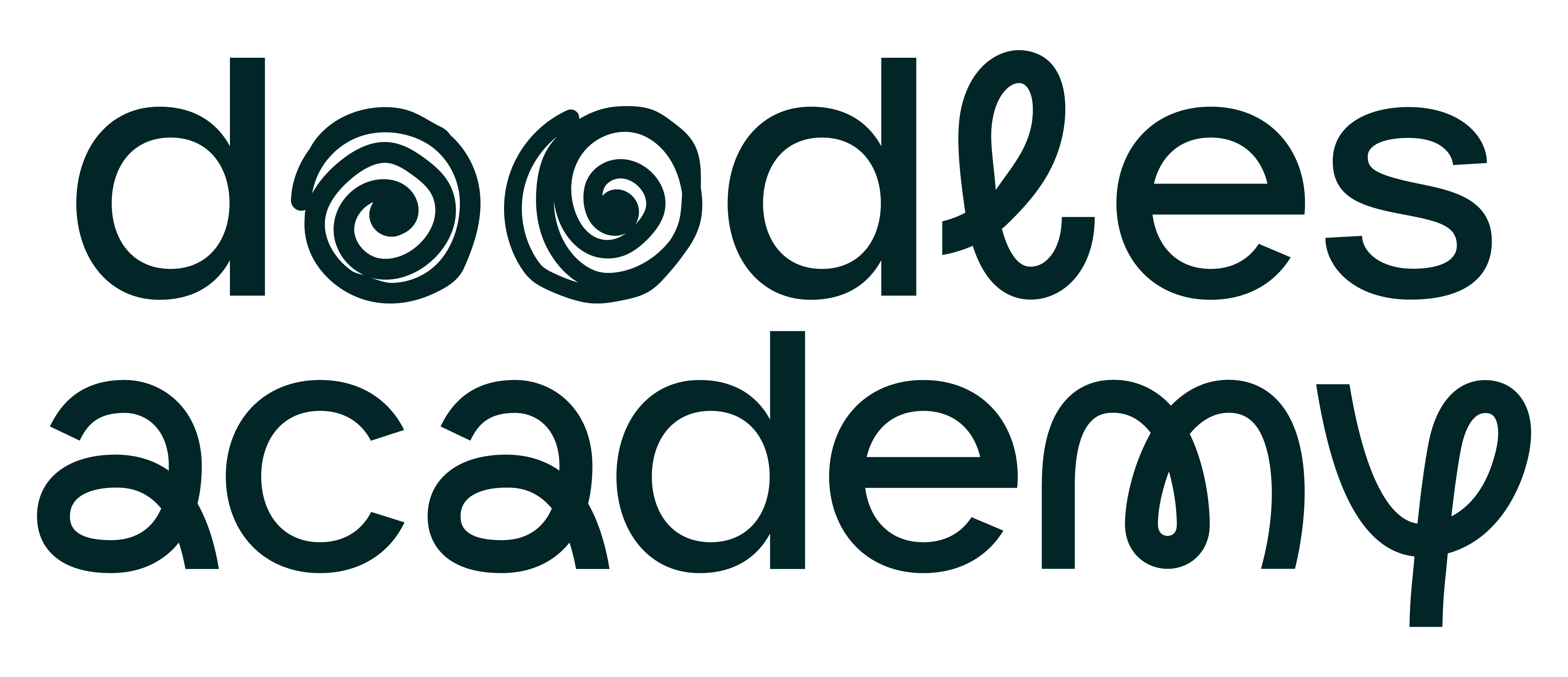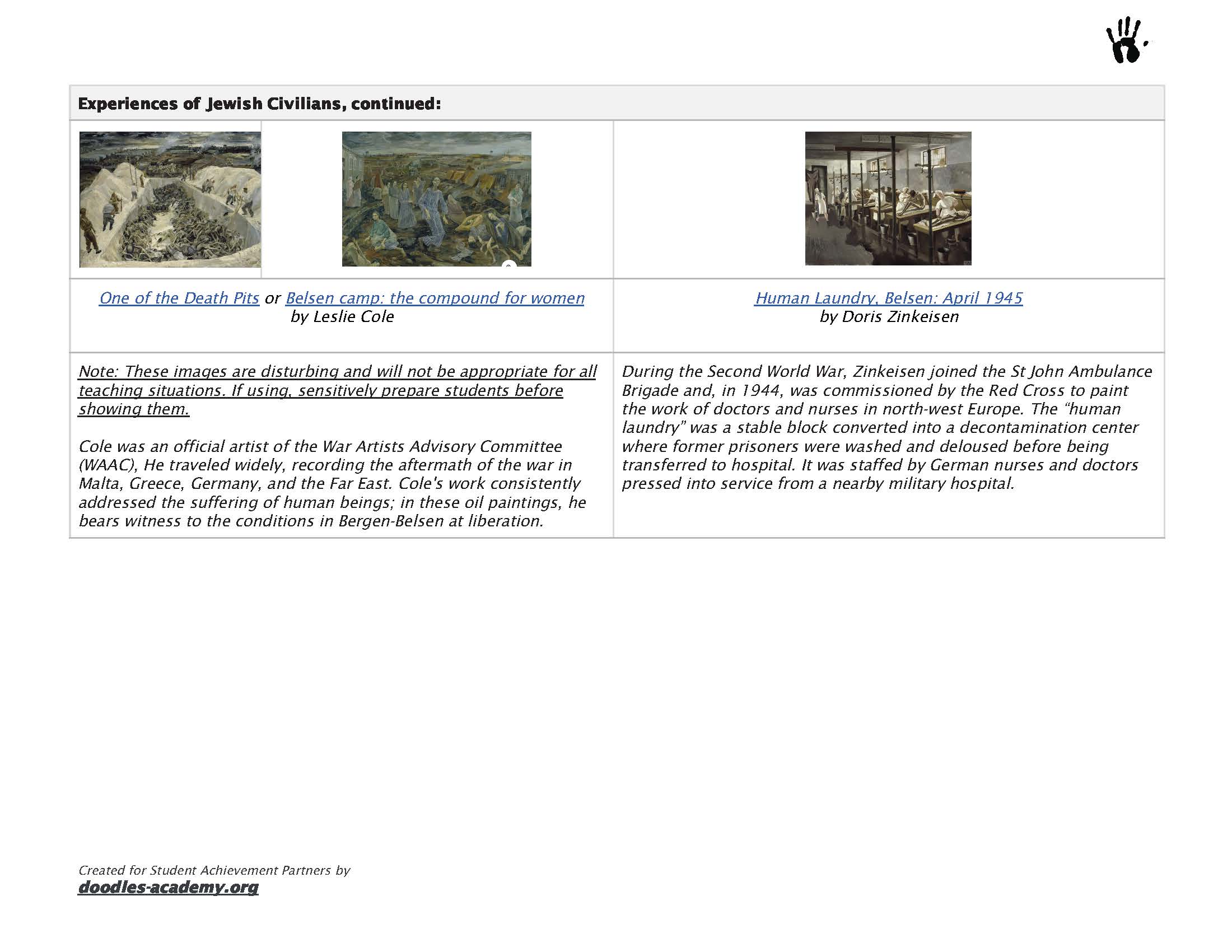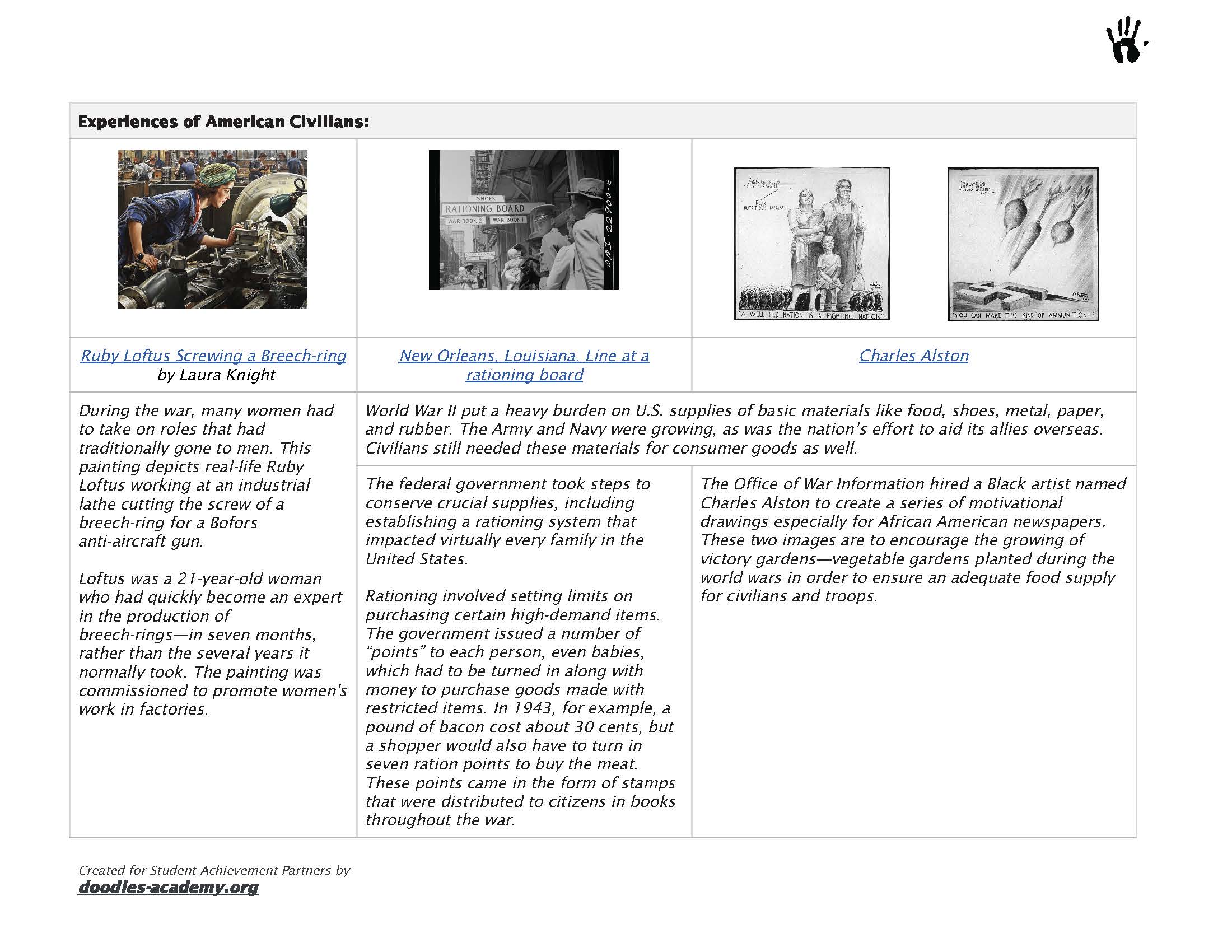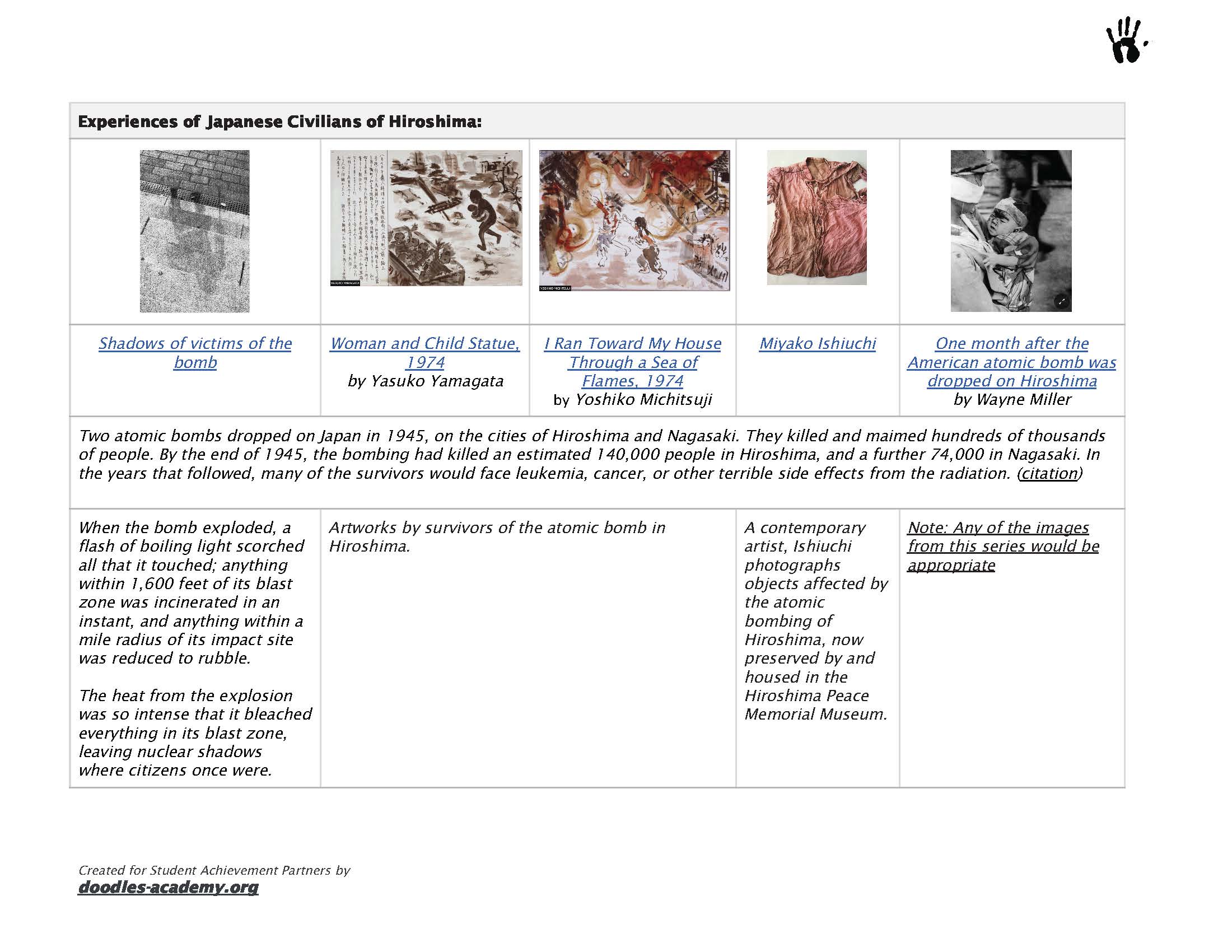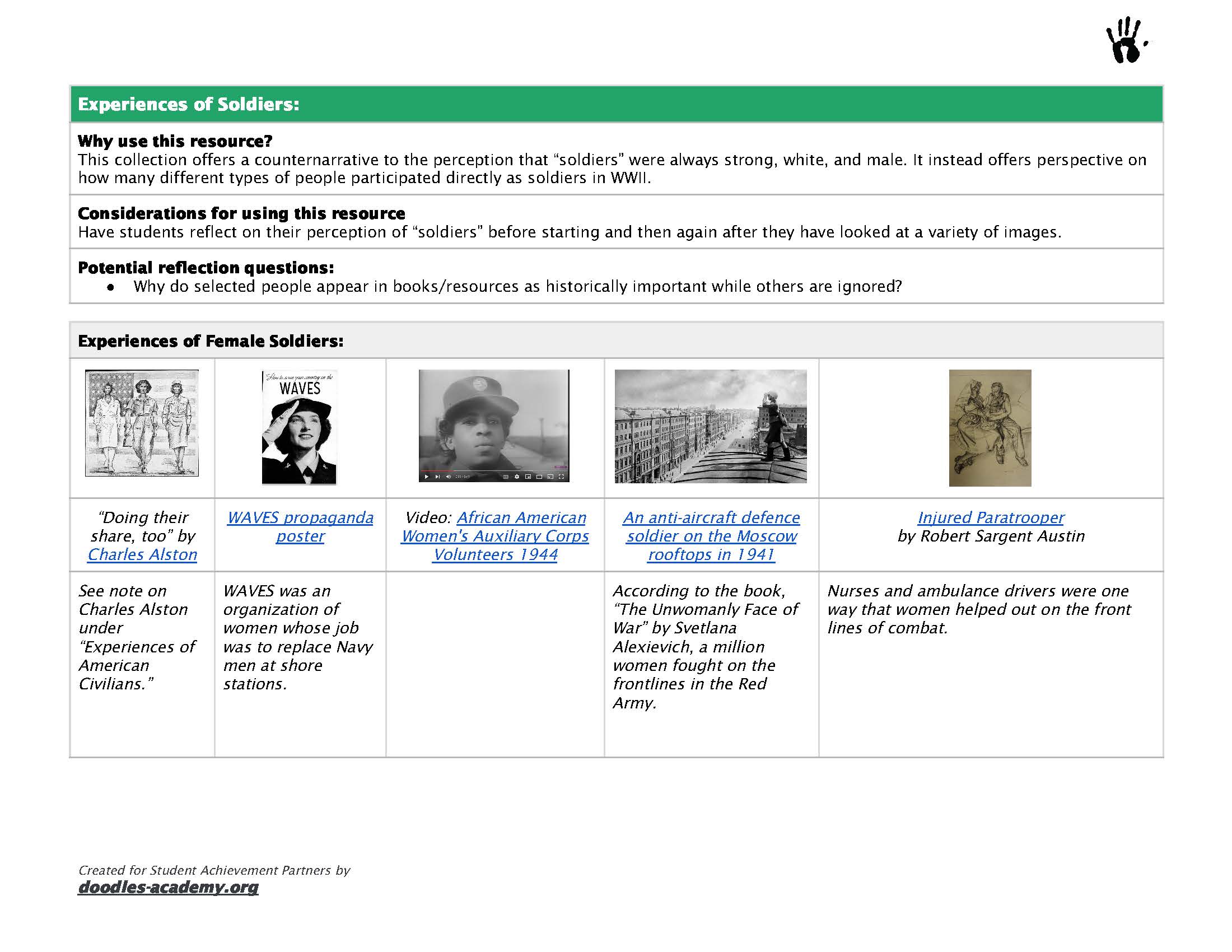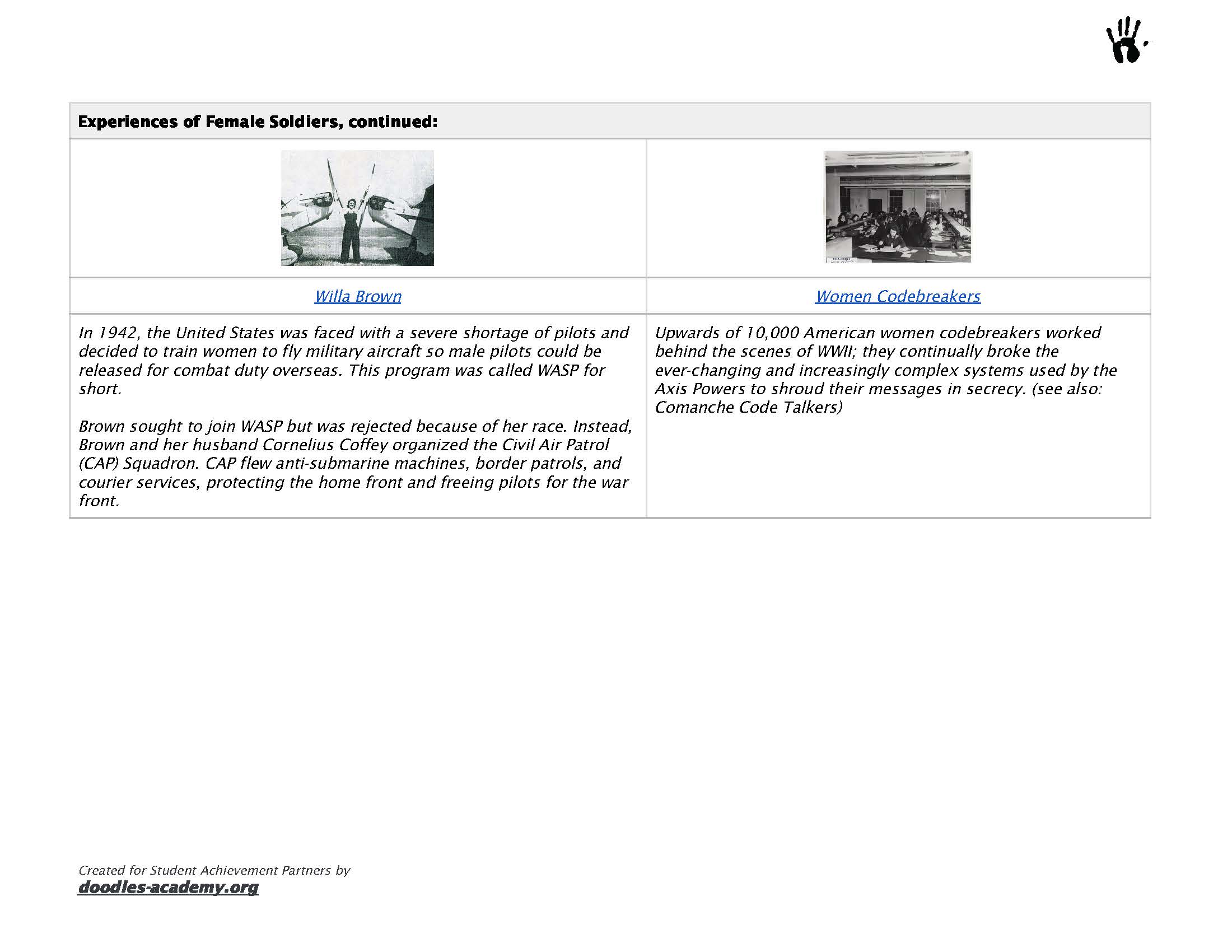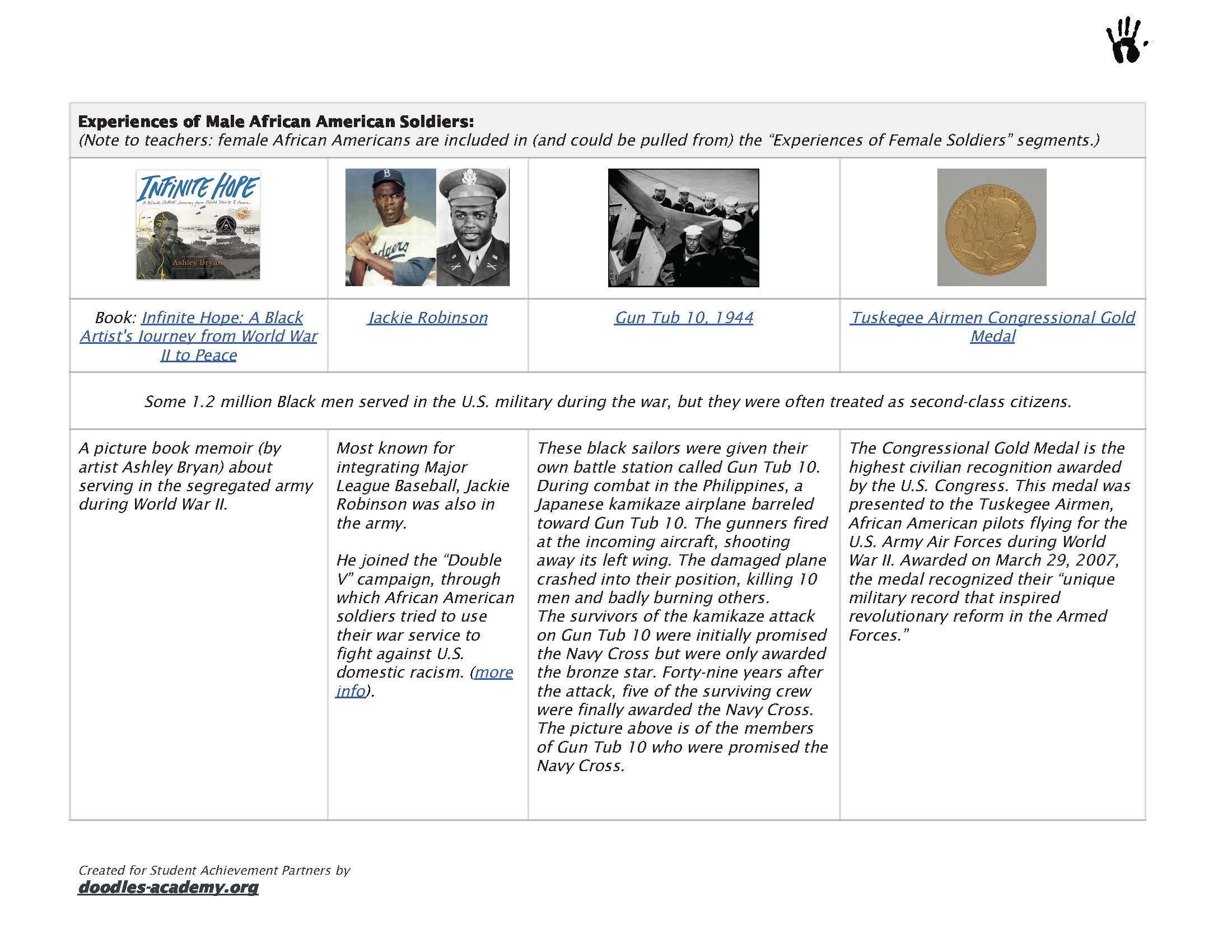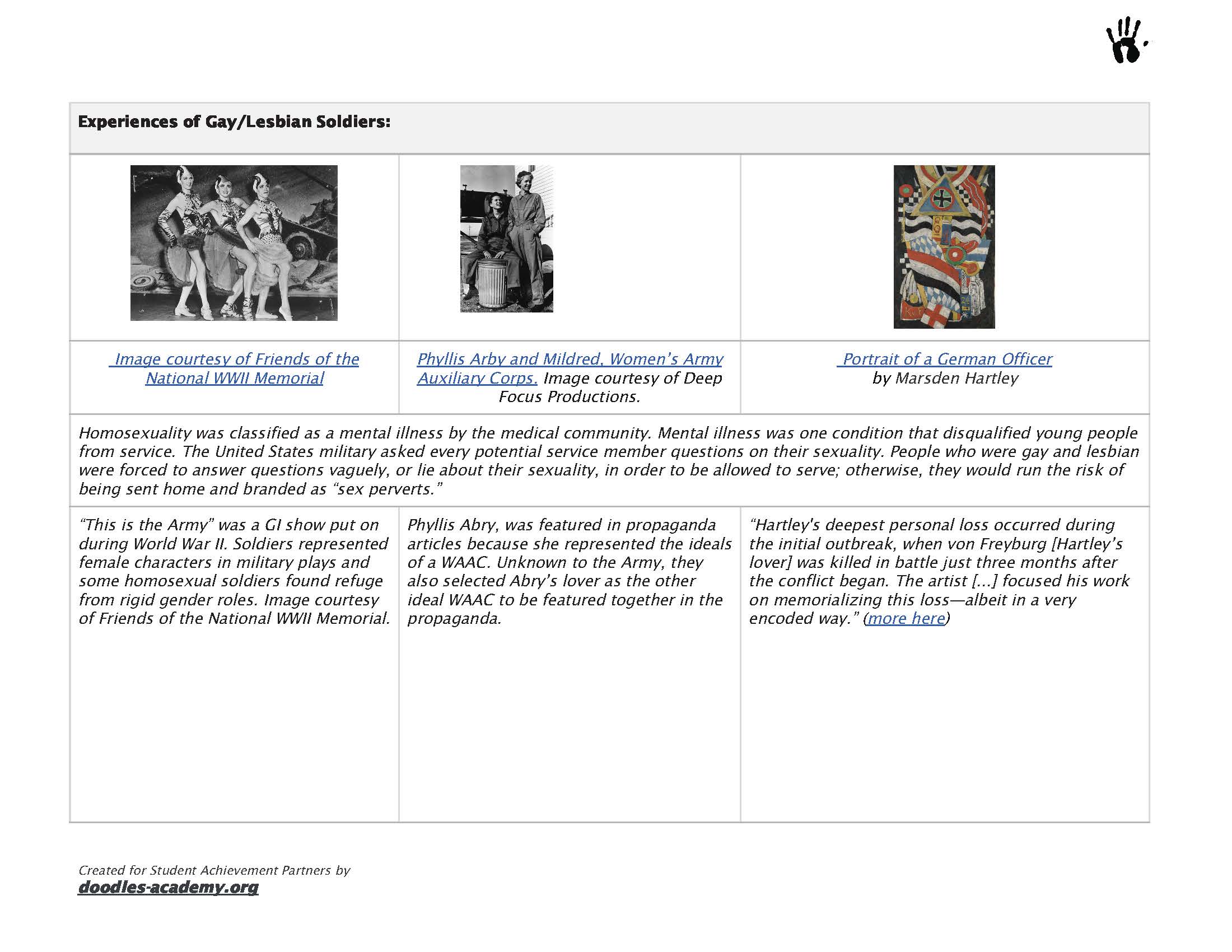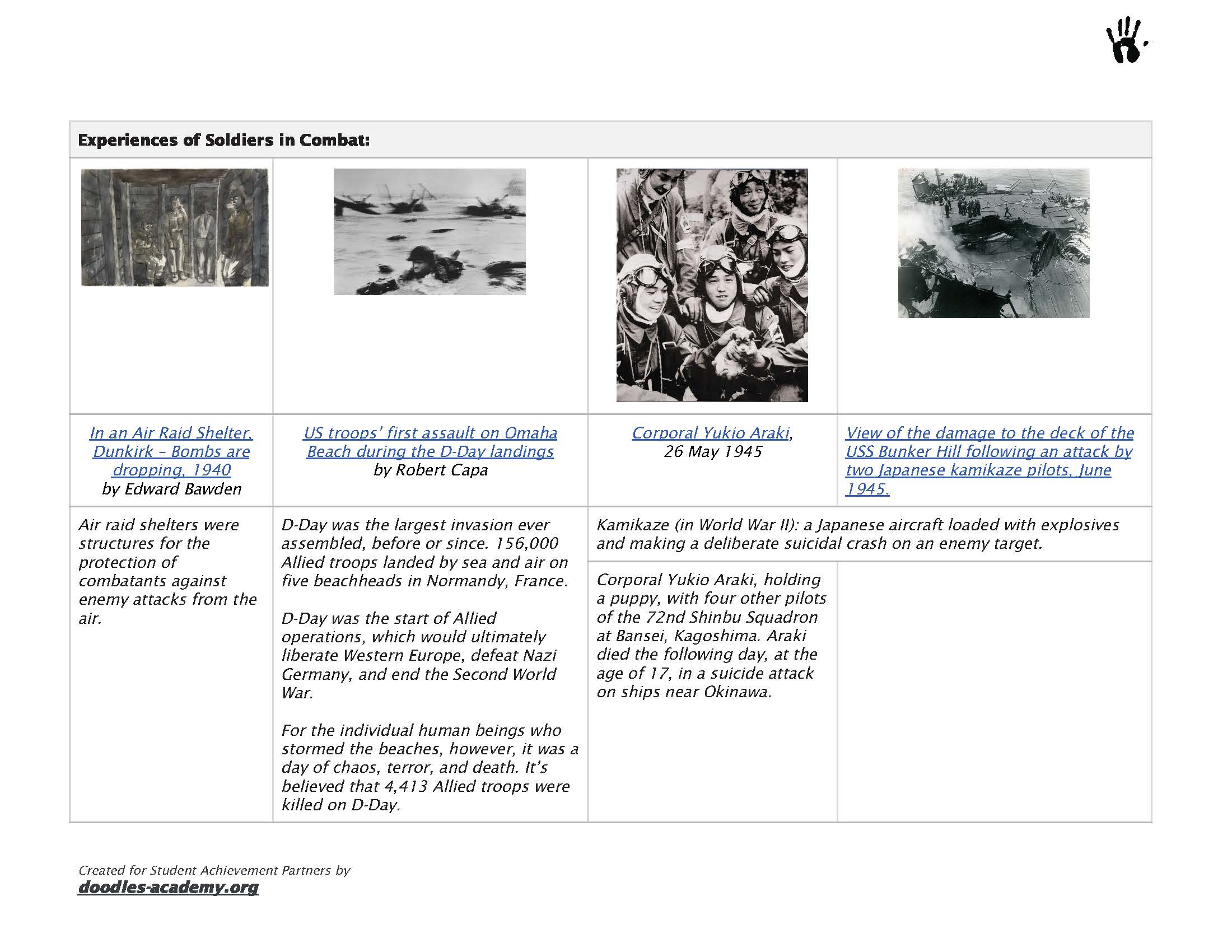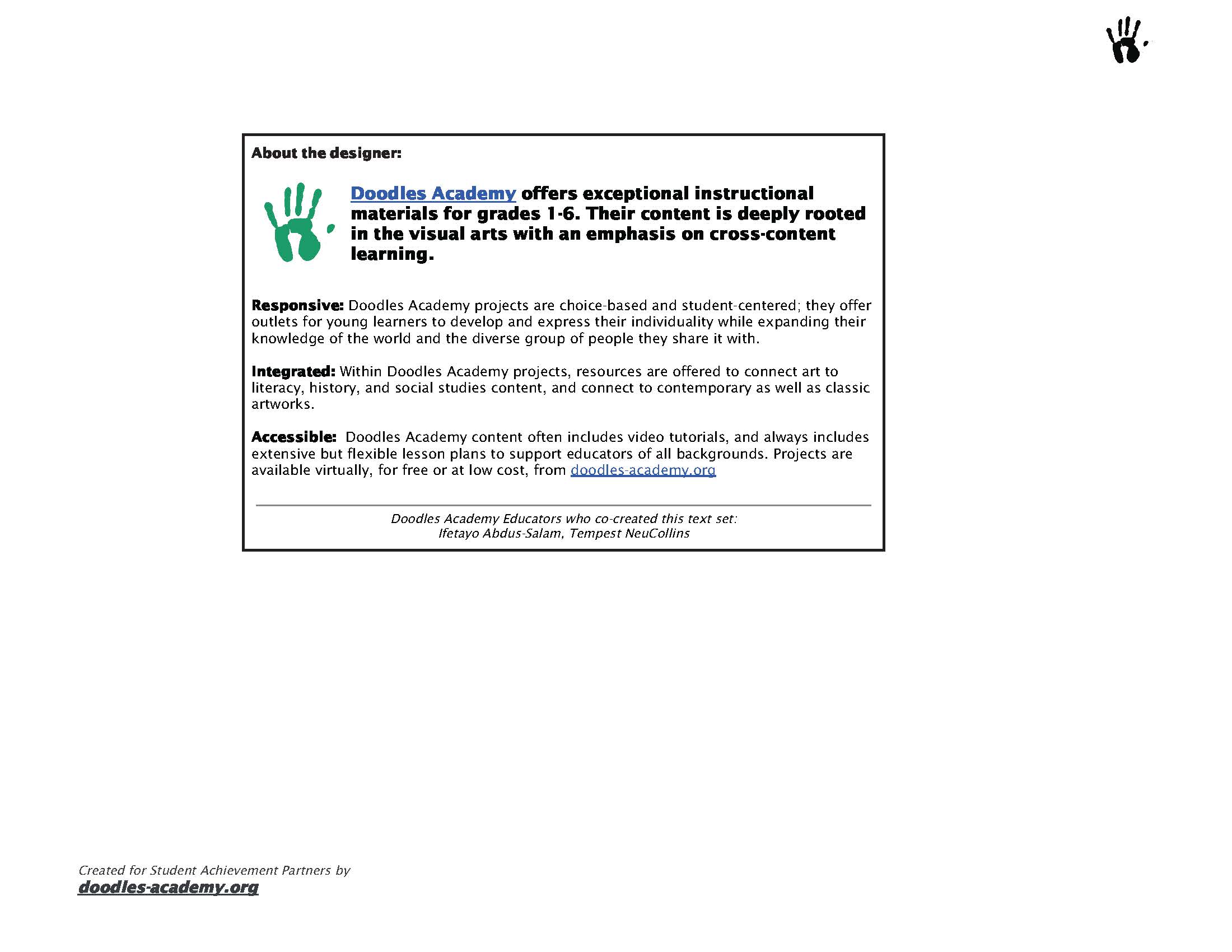Resource:
This blog post references an image-based text set created by Doodles Academy.
This image-based text set is about World War II and the impacts on varied experiences by identity groups, both civilian and soldier.
This is available for free on Student Achievement Partner’s website by following this link.
Art as Text
What does it look like when students can engage on a choose your own adventure approach when learning about content topics?
By Ifetayo Abdus-Salam, an educator and programs administrator
Text sets engage, support, and save on planning time.

You’re in the middle of designing a new content unit for your students. You have your learning objective set, and now have to compile the texts and resources your students will use to learn about their next topic. Here begins the inspiring, but often lengthy process of pulling texts and resources, and creating discussion questions, assignments, and assessment materials. As you compile the materials you will use, you are considering the learning needs of your class materials that will spark strong engagement and foster deep critical thinking.
But what would it look like if students could engage on a choose your own adventure approach when learning about content topics?
And how could incorporating the visual arts into content teaching deepen students’ learning of topics?
Enter: Text Sets; text sets support educators by providing comprehensive resources which simultaneously save educators planning time.
So, what is a text set?
Text sets are intentionally grouped sets of texts and media resources focused on a specific topic. This is a way to quickly build knowledge and vocabulary through a volume of reading.
Text sets are valuable supports that present comprehensive resource collections which amplify critical discourse, and deepen student learning. But they don’t have to be limited to traditional reading materials; when content teachers incorporate visual arts text sets, they utilize a collection of visual materials to build upon an anchor text.



Visual art text sets can be a valuable resource for non art educators to use to successfully increase student engagement and incorporate diverse perspectives and materials, which support varied learning styles. Using an Observe- Describe- Interpret- Reflect & Connect framework (see below, and downloadable here) teachers encourage students to look closely at the artworks and use evidence-based observation, as well as building on the observations of their peers, to think about and come to conclusions about the content of the artworks.

The NYS K-8 SS Framework identifies that “Students engaged and challenged to think like historians, raise questions, think critically, consider many perspectives, and gather evidence in support of their interpretations as they draw upon chronological thinking, historical comprehension, historical analysis and interpretation, historical research, and decision-making. These are the skills that will serve them well as participating citizens of a democracy.”
Visual Text Sets in Action
Observation of artworks can be used in the Social Studies/ History classroom to engage Social Studies Practice Thinking & Process skills and Common Core ELA/ History Social Studies Literacy standards. When leading classes through the process of observing, making meaning of visual imagery, and discussing students’ interpretations of artworks, the following are actively engaged:
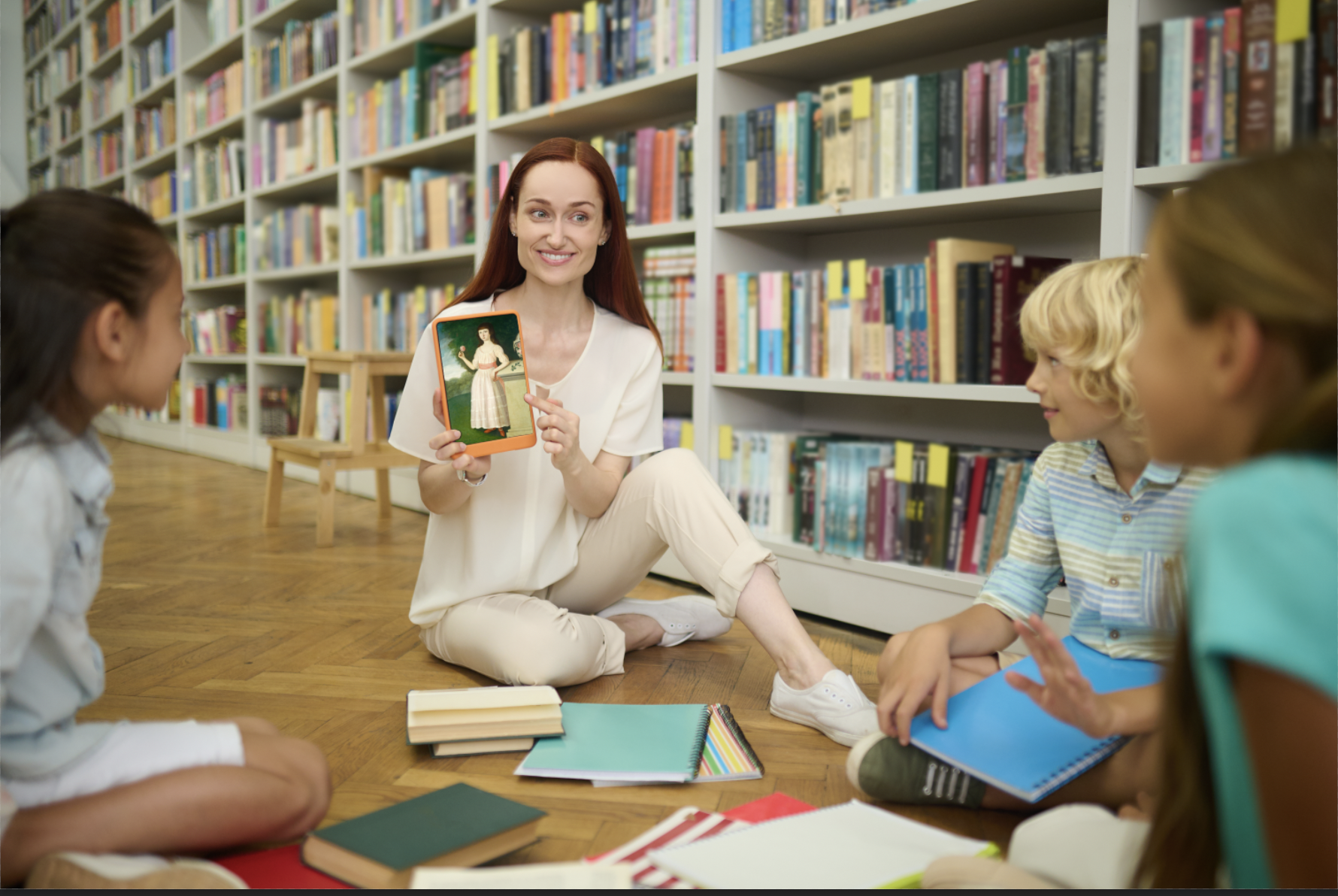
- Comparing and contrasting
- Drawing inferences and making conclusions
- Handling diversity of interpretations,
- Looking for patterns
- Supporting a position
- Participating in group discussion
- Decoding images
- Drawing conclusions
Consider a middle school class who is studying World War II. I recently worked with Doodles Academy and Student Achievement Partners to develop an image-based text set that supported this topic through the presentation of artworks representing diverse perspectives, which will ultimately broaden students’ understanding of the impact of the war on a global level.
Below is a small sample of the text set, from the section exploring the experiences of Jewish civilians:

Background Artifact—a badge that was worn by all Jewish citizens so that they could be easily identified.
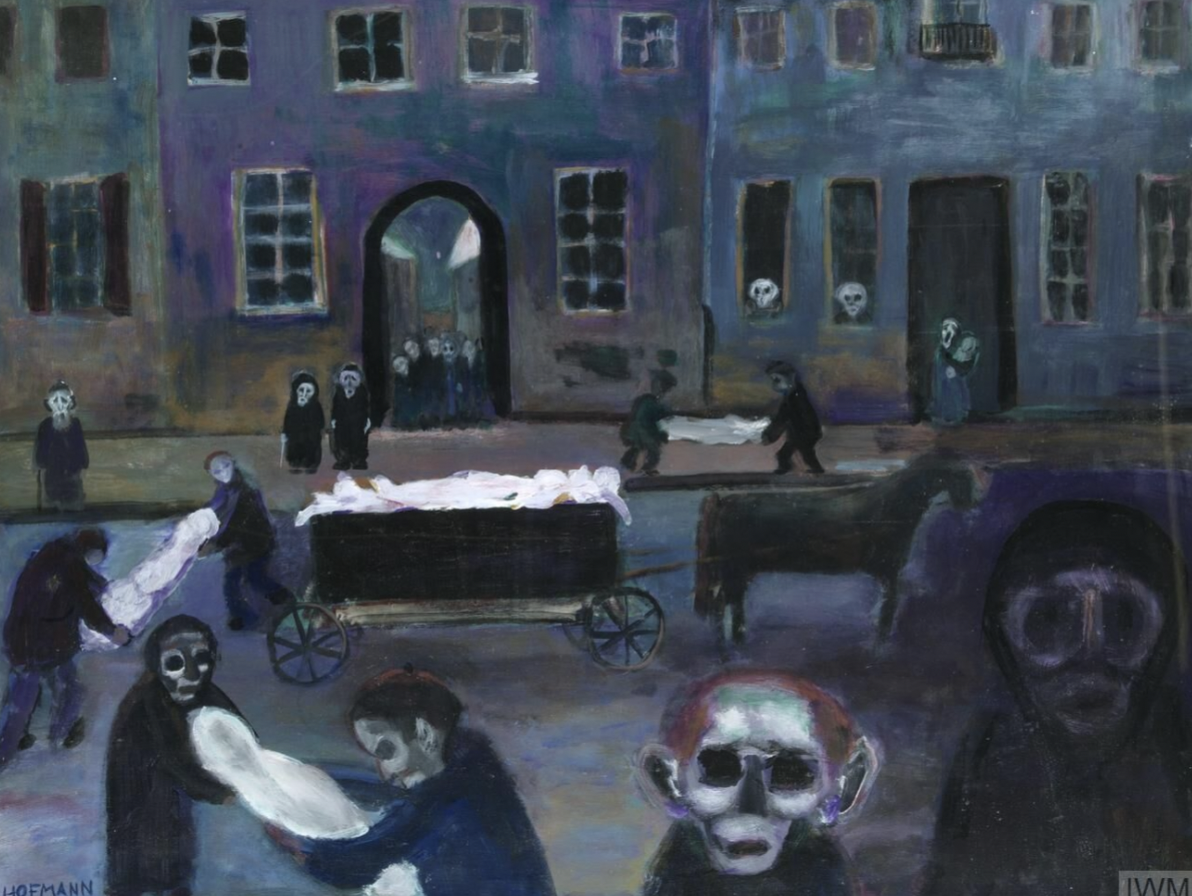
The Death Cart – Lodz Ghetto, 1980 by Edith Birkin
As one of the first steps in the Nazi plan to murder the Jews of Europe, the German authorities ordered the concentration and segregation of Jews into ghettos.
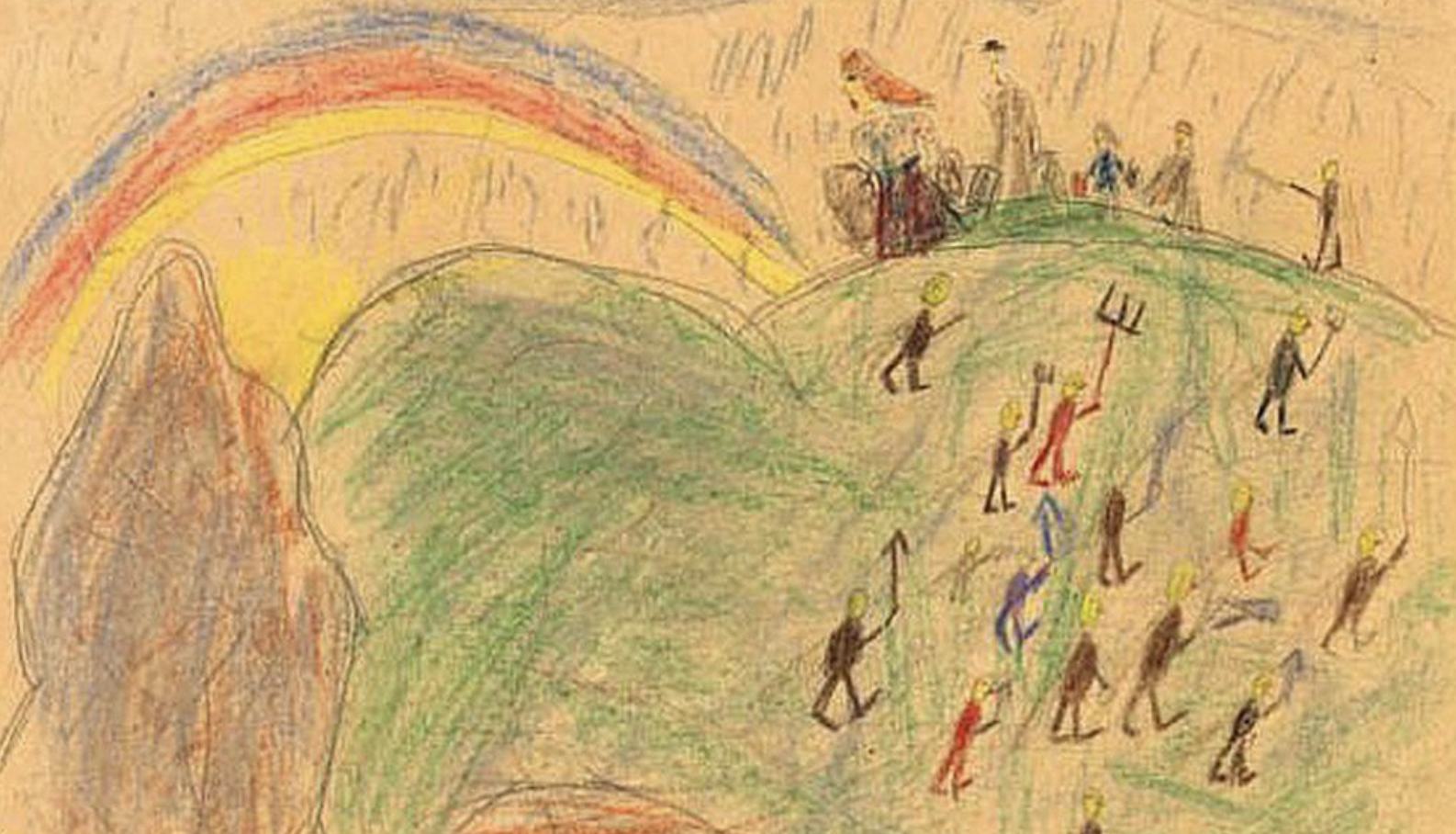
Malvina Lowova, killed in a death camp at age 12
Lowova, while held at a concentration camp, drew a family being deported under armed guard while farmers armed with pitchforks threatened them.
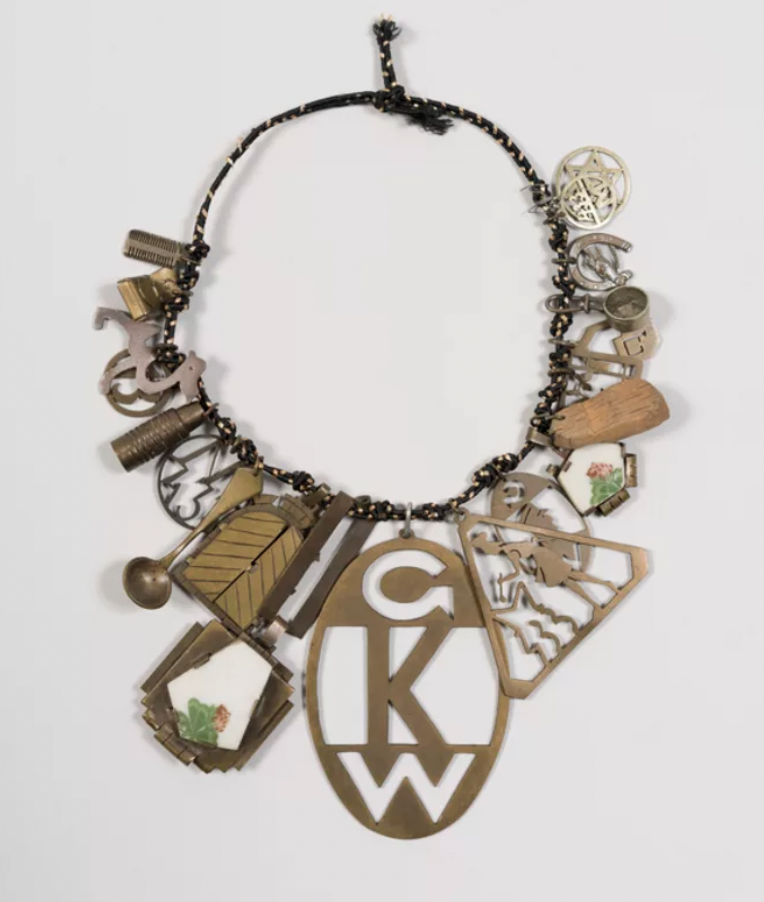
Charm Bracelet by Greta Perlman
This charm bracelet was assembled by a prisoner in the Theresienstadt concentration camp. These were either given to Perlman as personal mementos or collected by her in exchange for food, when she worked in the camp kitchen.
By incorporating images that represent a multitude of perspectives, and creating a space for students to observe, dissect, interrogate and discuss the meaning behind the works, students expand their understanding, make personal connections, and organize information to facilitate deep learning.
Student engagement can be heightened by allowing students to select their own choice of which works to engage, or grouping students by known interests. Discussion questions that prompt students to make connections between artworks and anchor texts, of new and prior knowledge facilitate meaning-making, and help students to fill the “big picture”.
This practice can be pushed even further by incorporating an art-making activity that prompts students to explore personal connections and reflections, and can be done in the content classroom, or in partnership with the art classroom.
Text sets serve as a powerful tool for educators by presenting well researched, expert created, structured resources for classroom learning, freeing up teachers time to focus on the facilitation of student learning.
Want to learn more?
Download the Doodles Academy Middle School World War II Visual Arts text set
Learn about Achieve the Core’s approach to building Culturally Relevant Text Sets

Ifetayo Abdus-Salam
Ifetayo (Ife) Abdus-Salam is an educator and programs administrator with 17 years of experience working in New York City schools, nonprofits and cultural institutions, including the Studio Museum in Harlem, the International Center of Photography, the Intrepid Sea Air and Space Museum and the New York City Department of Education. Ife is a champion for the ability of rigorous, socially relevant programming to inspire and engender success, with a passion for serving traditionally underserved communities. Ife holds a Bachelor of Arts in Photography from Tisch School of the Arts, New York University, a Masters of Teaching and Learning in K-12 Art Education from the Rhode Island School of Design.
In her free time, Ife serves as a current Board Member on the Educational Leadership Council of Doodles Academy and a member of the Steering Committee of her local Harlem community garden.
